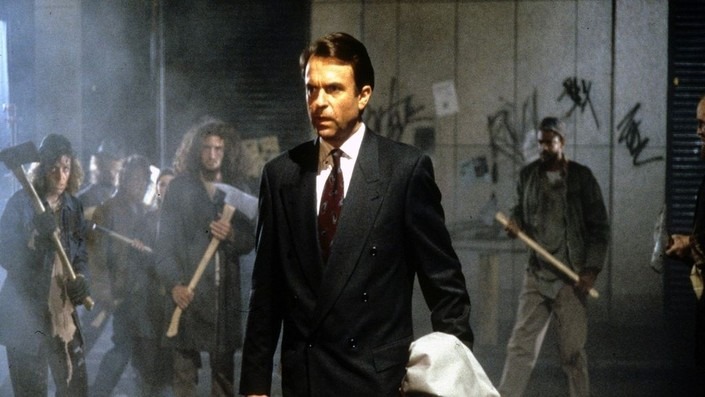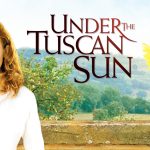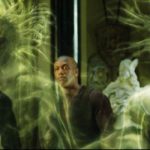In the Mouth of Madness (1994)

In the Mouth of Madness (1994) is a supernatural horror film directed and co-written by John Carpenter, a master of the horror genre known for his works like Halloween (1978) and The Thing (1982). With its dark, surreal narrative and blending of psychological horror and Lovecraftian themes, In the Mouth of Madness stands as a highly influential film within the genre, both as a tribute to the power of storytelling and as an exploration of the fragility of human perception. Starring Sam Neill, Julie Carmen, Jürgen Prochnow, David Warner, and Charlton Heston, the film’s narrative explores the boundary between fiction and reality in a chilling and unsettling way.
The film follows the story of insurance investigator John Trent (played by Sam Neill), who is tasked with investigating the disappearance of a popular horror novelist named Sutter Cane (Jürgen Prochnow). Cane’s books have become increasingly popular but also increasingly disturbing, with readers of his work beginning to experience violent, insane behavior. Trent’s investigation leads him to the mysterious town of Hobb’s End, where he discovers the dark secret behind Cane’s writings and the terrifying power of his fiction. As Trent uncovers more about Cane’s work, he begins to question his own reality, descending into madness and confronting the terrifying idea that the world may be controlled by the stories we tell.
The film begins with John Trent, an insurance investigator, being hired by a publishing company to track down Sutter Cane, a famous horror writer whose works have become increasingly disturbing. Cane’s latest manuscript is missing, and the publisher fears that his work may be too dangerous to be released. As Trent investigates, he learns that Cane’s stories have an eerie power: they seem to influence the world around them. People who read his books begin to experience disturbing visions, hallucinations, and violent behavior.
Trent’s investigation leads him to the mysterious town of Hobb’s End, a place that appears to be entirely fictional in the real world. Despite this, Trent is able to locate it using a map drawn by Cane, and when he arrives, he finds that the town is populated by strange and eerie inhabitants who seem to be characters from Cane’s books. As Trent delves deeper into the town’s secrets, he encounters a series of terrifying supernatural occurrences and begins to lose his grip on reality.
Trent meets with the enigmatic Linda (Julie Carmen), who claims to have a connection to Cane, and they team up to try to solve the mystery of the town and Cane’s writings. As the film progresses, Trent begins to experience the same type of madness that seems to have afflicted those who read Cane’s books, leading him to question whether the horrors he’s witnessing are real or merely products of his own mind. The film culminates in a shocking twist that leaves the audience questioning what is real and what is fiction, as the boundaries between the two collapse entirely.
At its core, In the Mouth of Madness is a meditation on the power of storytelling and the blurred lines between fiction and reality. The film explores the idea that the stories we create can have a profound and even terrifying influence on the world around us. Sutter Cane’s books are presented as being so powerful that they can warp reality itself, pulling people into a nightmarish world where fiction becomes fact. The film suggests that stories have the ability to shape our perceptions, our behavior, and our very understanding of the world. In this way, Carpenter’s film acts as both a love letter to and a critique of the horror genre, acknowledging its power while also exploring the dangerous consequences of consuming disturbing or psychologically unsettling narratives.
Another prominent theme in the film is the fragility of human perception and the thin line between reality and madness. Throughout the film, John Trent begins to lose his grip on reality as he is exposed to the horrific and surreal events in Hobb’s End. His descent into madness mirrors the experience of the characters in Sutter Cane’s books, who become consumed by the fear and violence within the stories they read. As Trent’s perception of reality unravels, the audience is also drawn into his disorienting and chaotic journey. This theme of madness is explored in ways that make the viewer question what is real and what is imagined. Carpenter’s use of unreliable narration and surreal visuals reflects the theme that our understanding of the world can be manipulated, distorted, and shattered by external forces or internal delusions.
The film also explores the idea that the mind is fragile, and once it is exposed to certain horrors, it may not be able to return to a stable state. As Trent becomes increasingly consumed by the horrors of Cane’s work, he begins to question not only his own sanity but the very nature of the world around him. The theme of madness is not only personal, but it also suggests a collective human vulnerability to the corrupting power of terrifying narratives, especially those that confront us with our deepest fears.
In the Mouth of Madness is heavily influenced by the works of H.P. Lovecraft, the celebrated writer known for his cosmic horror and tales of forbidden knowledge. Lovecraft’s works often explore the insignificance of humanity in the face of an uncaring and unfathomable universe, where mankind’s limited understanding cannot comprehend the true nature of reality. This existential terror is mirrored in the themes of In the Mouth of Madness, where characters are driven to madness by the realization that reality itself may be an illusion or that their world is being manipulated by forces beyond their control.
The film also features elements of Lovecraftian horror in its depiction of ancient, otherworldly forces that lurk behind the veil of human understanding. The town of Hobb’s End, with its nightmarish residents and unsettling atmosphere, evokes Lovecraft’s vision of a world teeming with unspeakable horrors that are beyond the grasp of human comprehension. The idea that reality is fragile and can be altered by the will of a powerful entity is central to Lovecraft’s philosophy and is given a modern twist in Carpenter’s film.
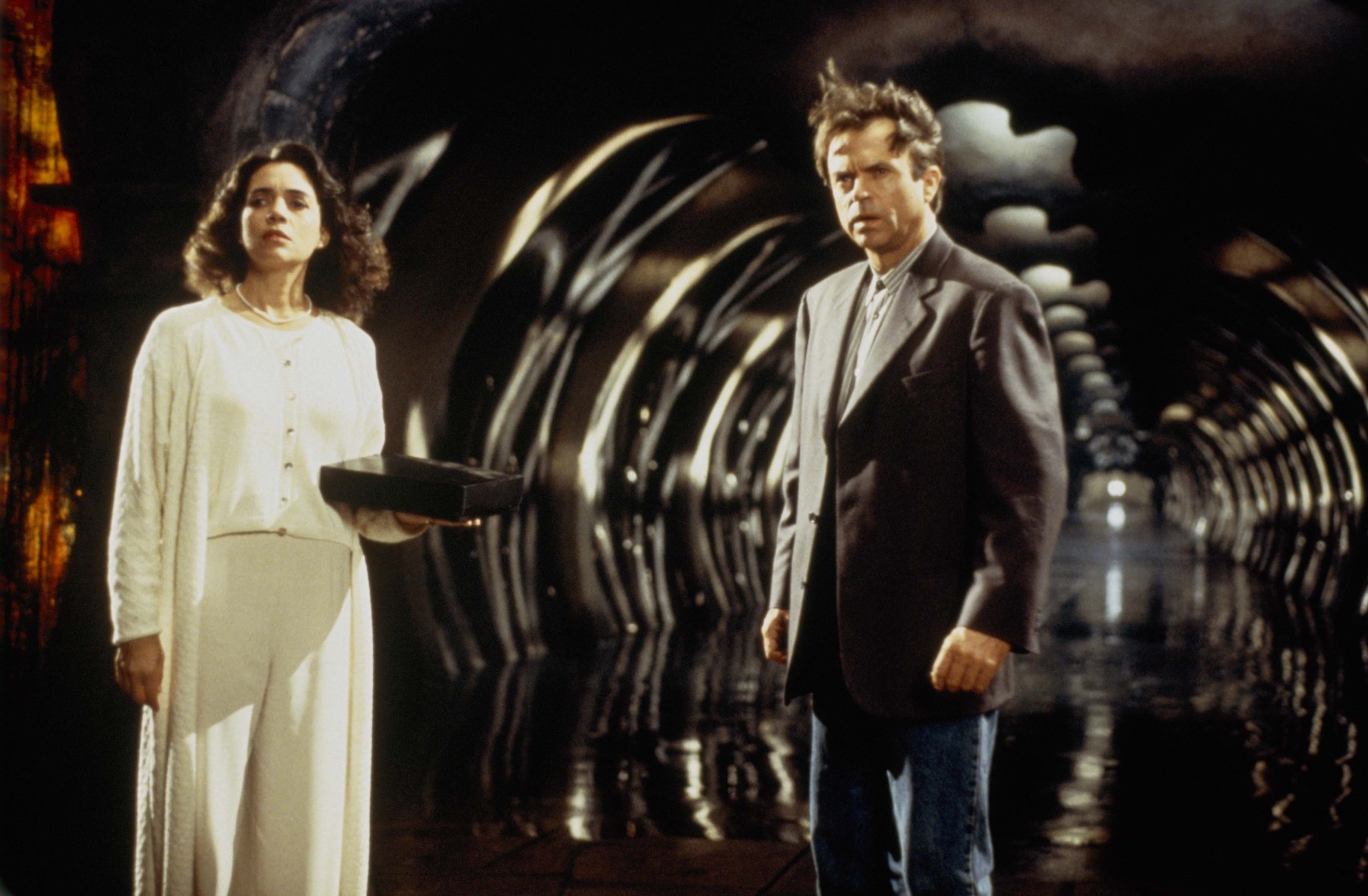
In the Mouth of Madness also touches on themes of media influence and the effect of mass entertainment on the human psyche. Sutter Cane’s books are so powerful that they shape the reality of those who read them, creating a reflection of how media and popular culture can profoundly affect people’s thoughts, emotions, and behavior. The film raises questions about the nature of consumption—whether we are passively absorbing content or actively engaging with it—and the dangers of letting fiction and entertainment dictate our perception of reality. The film suggests that horror, in particular, has the power to blur the lines between fiction and truth, potentially leading individuals to become detached from the real world.
John Carpenter’s direction in In the Mouth of Madness is a masterclass in atmosphere and tension. Carpenter creates a visually haunting and disorienting world through his use of shadows, framing, and the eerie lighting that characterizes much of the film. The camera work is often unsettling, using quick cuts, angled shots, and lingering close-ups to build a sense of paranoia and dread. The film’s tone is dark and oppressive, with a sense of constant unease hanging over the characters as they try to make sense of the horrors surrounding them.

Carpenter’s use of practical effects, alongside the film’s surreal visual sequences, adds to the sense of disorientation and terror. The film features a number of bizarre and nightmarish sequences, such as scenes where characters move in and out of reality or encounter grotesque and unnatural creatures. These sequences effectively capture the sense of an unraveling world, where nothing is as it seems and reality itself is in flux.
The film’s soundtrack, composed by Carpenter himself, is another crucial element in setting the mood. The score combines eerie synths with unsettling atmospheric sounds that help create an atmosphere of dread and suspense. The music often amplifies the sense of unease, underscoring the growing tension as Trent’s perception of reality becomes increasingly distorted.
Sam Neill’s performance as John Trent is central to the film’s success. Neill perfectly captures the character’s descent into madness, portraying a man who is initially skeptical and rational but is eventually overwhelmed by the bizarre and terrifying events he experiences. Neill’s portrayal of Trent’s unraveling mental state is both compelling and tragic, giving the character a sense of humanity and vulnerability amidst the chaos.
Julie Carmen plays Linda, a mysterious woman who helps Trent uncover the truth behind Sutter Cane’s books. Carmen’s performance adds an emotional depth to the film, as Linda serves as both a guide and a source of emotional support for Trent, even as she too becomes drawn into the horrors of the town. The chemistry between Neill and Carmen helps ground the film’s supernatural elements, giving the audience a human connection amidst the chaos.
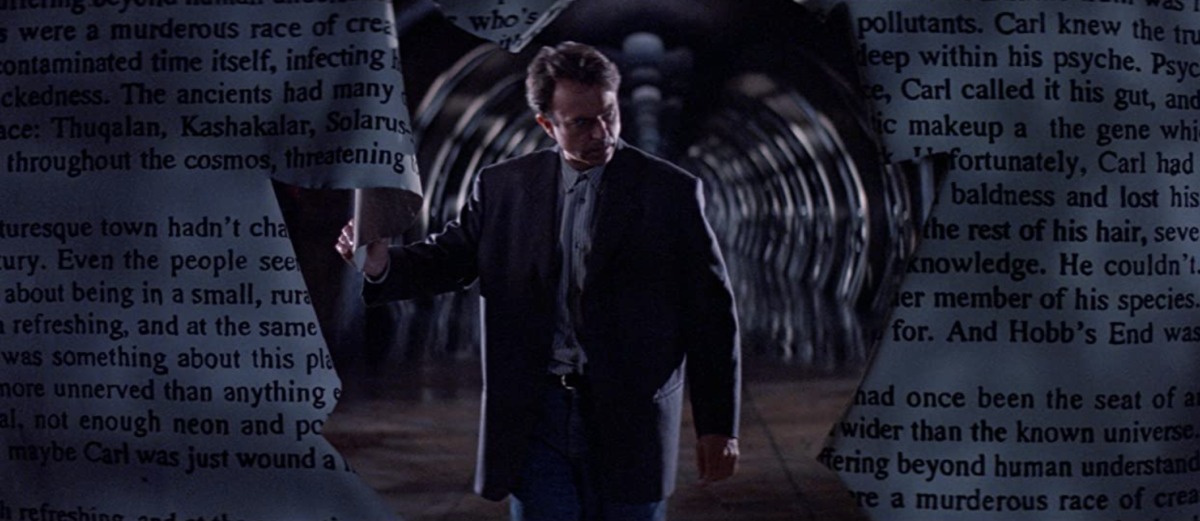
Jürgen Prochnow’s portrayal of Sutter Cane adds a chilling and enigmatic presence to the film. Cane is the quintessential mad genius—an author whose work has the power to shape reality itself. Prochnow’s performance is both charismatic and unsettling, capturing the character’s eerie calm and his disturbing obsession with the power of his own creations.
In the Mouth of Madness (1994) is a unique and unsettling exploration of the power of fiction, the fragility of reality, and the terrifying potential of the human mind. Through its eerie atmosphere, psychological horror, and philosophical themes, the film stands as a significant work in the genre, exploring the boundaries between life, death, and madness. Directed by John Carpenter, the film masterfully blends cosmic horror with a modern critique of the influence of media and
